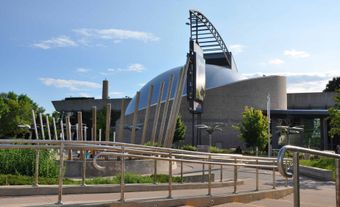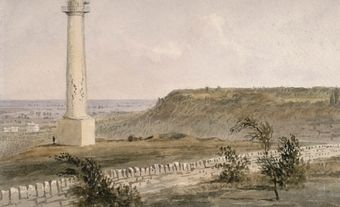
Creation and Overview
Though works were first acquired in 1920 and the bill that created the museum was passed in 1922, the Musée officially opened on 5 June 1933 as the Musée de la province de Québec. The original objective of the Musée was to provide a home for the provincial archives, the museum of natural sciences and the fine arts museum.
Over the years, it developed its fine arts collection through the acquisition of works that were representative of the evolution of the arts in Quebec. It gradually began concentrating exclusively on art, leaving to other institutions the work of conserving the national archives and the natural history collections. The natural sciences collections were removed in 1962, while the Archives de la province de Québec were moved to Université Laval in 1979.
The museum’s name was changed to the Musée du Québec in 1963. By 1983, when the National Museums Act made the Musée a Crown Corporation, its collection solely comprised works of art. In 2002, it became known as the Musée national des beaux-arts du Québec and began offering free admission to its permanent collection.
Collections
The Musée national des beaux-arts du Québec was among the first institutions to recognize the talent of the province’s artists. Painters and sculptors such as Horatio Walker, Sylvia Daoust, Clarence Gagnon, Alfred Laliberté, Marc-Aurèle de Foy Suzor-Côté, Georges Saint-Pierre, Alfred Pellan, Jean-Paul Riopelle, Jean Paul Lemieux, Françoise Sullivan, Fernand Leduc, Marcelle Ferron and Paul-Émile Borduas have all been exhibited at the museum, as has architect and designer Julien Hébert.

The Musée national des beaux-arts du Québec houses the world’s most extensive collection of Québécois art, ranging from the paintings of 19th-century masters like James Wilson Morrice and Cornelius Krieghoff to the work of young artists today, like those belonging to the Québec-City-based collective BGL, who represented Canada at the 2015 Venice Biennale.
In 2000, the Musée acquired Jean-Paul Riopelle’s monumental late masterpiece L’Hommage à Rosa Luxemburg (1992), a 40-metre-long tribute to his former partner, American painter Joan Mitchell. In 2003, the Musée acquired a series of watercolours by Benjamin Fisher, discovered at Oxford University’s Balliol College, depicting Québécois life in the late-18th century. In 2005, art collector Raymond Brousseau, in conjunction with Hydro-Québec, donated his collection of 2,635 works of Inuit art to the Musée. A new permanent gallery devoted to Inuit art, The Brousseau Collection of Inuit Art – Hydro-Québec Gallery, opened in 2006.
Notable Exhibitions
Some of the more notable exhibitions held by the Musée national des beaux-arts du Québec over the years include the highly successful Tutankhamun Treasures in 1965. Paintings by French Impressionist and Post-Impressionist Masters from the Soviet Union drew 135,000 visitors in six weeks in 1985–86, while Rodin in Québec City was attended by 525,000 people over 103 days in 1998.
To commemorate the 400th anniversary of Quebec City in 2008, the Musée presented a collection of works from the Musée du Louvre in Paris that was attended by about 465,000 people. In 2011, Madeleine P. Pelland donated 1,630 works of art and art objects by Alfred Pellan to the Musée.

First Expansion: 1989–91
A major expansions project to provide the Musée with the facilities of a modern museum took place between 1989 and 1991. It more than doubled the surface area previously available for art exhibitions and enabled the museum to offer visitors a wider variety of services.
An architectural design created by Charles Dorval and Louis Fortin integrated two existing buildings: the Gérard Morisset pavilion, the original museum building; and the Charles Baillargé pavilion, formerly the Quebec City jail (some of the jail cells were preserved as a record of 19th-century prison conditions). In order to preserve the natural quality of the setting (the Plains of Abraham) and the distinctive character of the two older buildings, the architects chose the unusual strategy of concealing a section of the new wing under the park’s natural landscaping.
This gathering place is now home to all of the museum’s public services. The new museum complex — comprising the original museum building, the former prison and the new wing connecting the two — includes 12 exhibition galleries, an auditorium, workshops, storerooms, a restaurant and a gift shop. A sculpture garden, showcasing 15 contemporary works by Quebec and international artists, opened in 1993.
Second Expansion: The Pierre Lassonde Pavilion
A second major expansion of the Musée added a fourth pavilion to the museum complex and was opened to the public on 24 June 2016. The expansion provides a glass-enclosed gateway to the museum from the street and doubles the available exhibition space. It was designed by the internationally acclaimed Office for Metropolitan Architecture — headed by award-winning architect Rem Koolhaas — in collaboration with the Montreal firm Provencher Roy.

 Share on Facebook
Share on Facebook Share on X
Share on X Share by Email
Share by Email Share on Google Classroom
Share on Google Classroom


